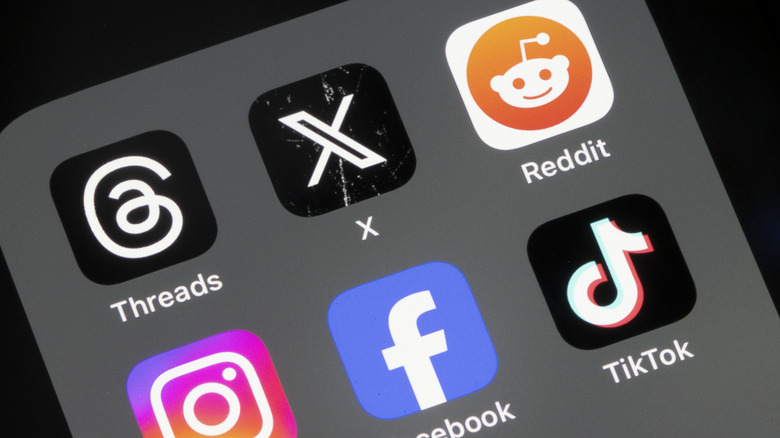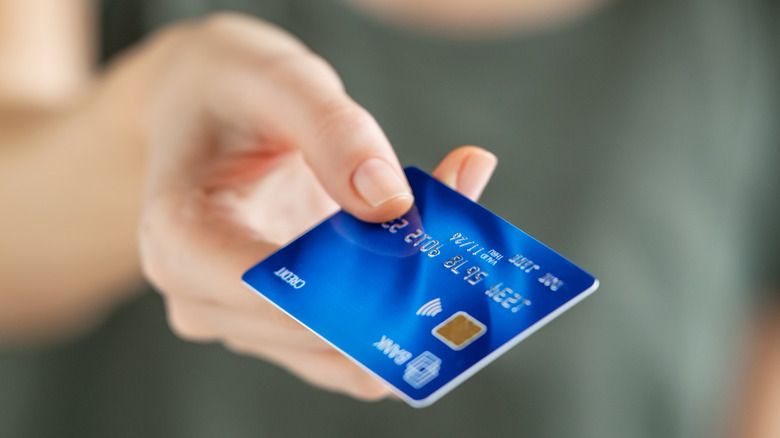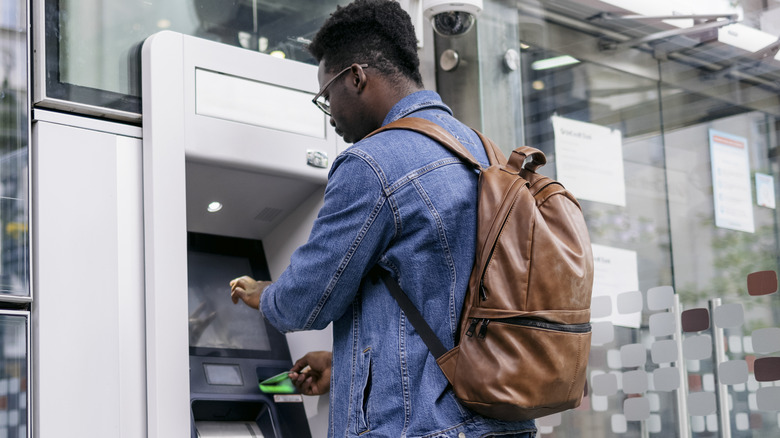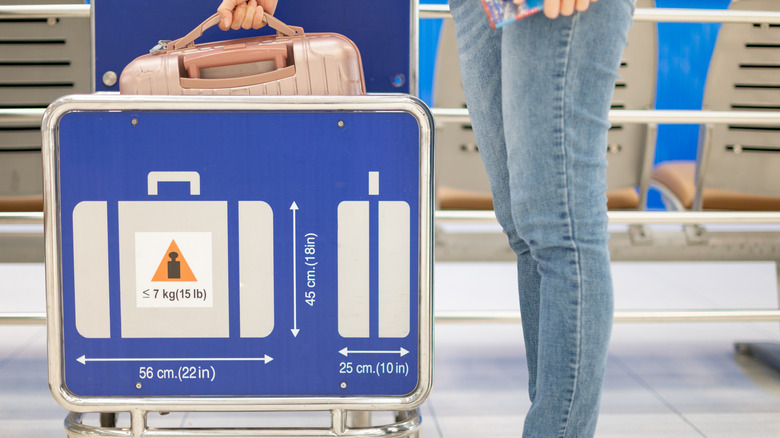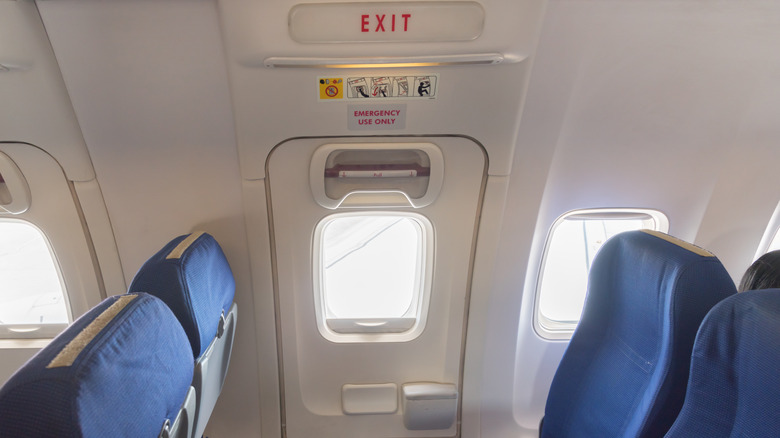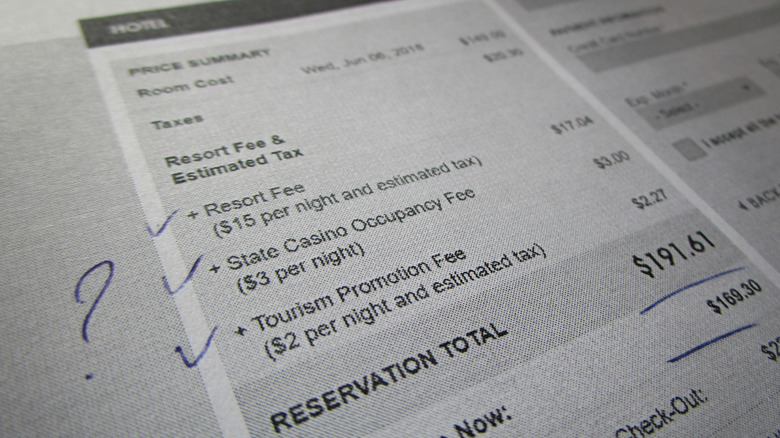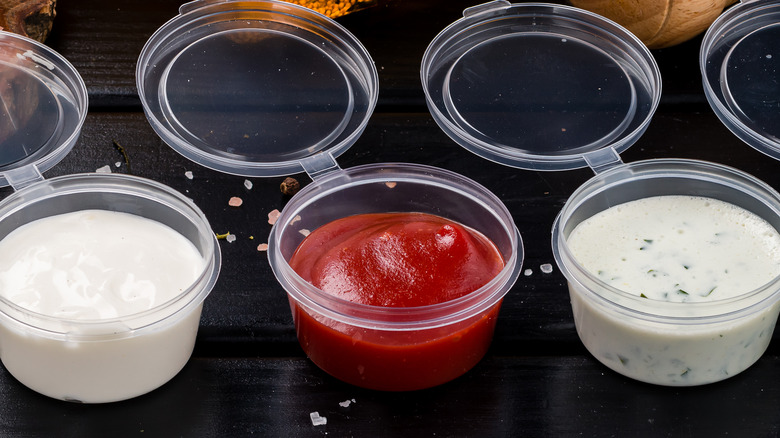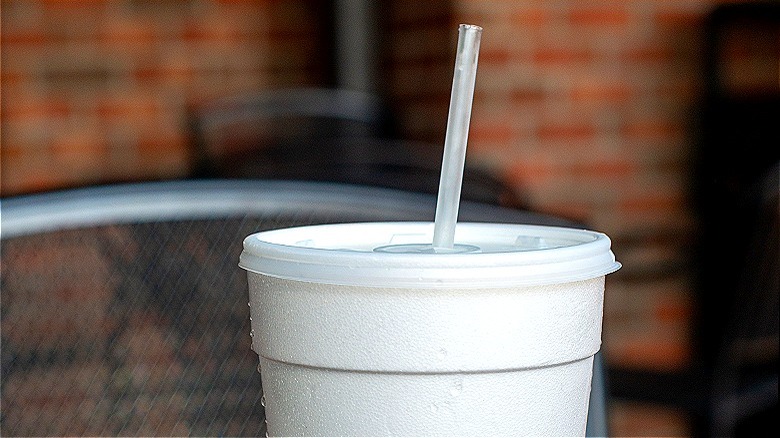Things That Used To Be Free But Now Cost Money
Freebies are great, but they seem to be much harder to come by now than in the past. Many things that used to be readily available at no cost now have fees attached. What's up with that? The fact is that just about anything that a business gives away actually costs money to produce, purchase, or provide.
If the cost of offering a freebie exceeds the value a company may expect to get as a result of doing so, it only makes sense (from the organization's point of view) to discontinue giving it away. As a consumer, though, it's hard to get used to paying for something you previously received for free as a standard practice, but the reality is that businesses aren't required to offer (or continue offering) products or services at no cost.
Wondering what you might have to pay for now that would probably have been available for free in the past? You might be surprised to discover some of the items and services on this list of things that used to be free but now cost money.
Using X (formerly known as Twitter)
Social media sites have been free for people to use since they were first introduced, but that may be starting to change. In October of 2023, the X platform started testing a program in a few countries that would require new users who join the site via web browsers (rather than mobile devices) to pay $1 to activate their account in conjunction with telephone verification. This is being touted as a way to cut down on bots that post disinformation to the platform. New users who don't complete the verification process (including the payment) will be able to view content on X, but not post to the site. Time will tell if this becomes an annual subscription fee or is required in more countries.
Even in places where new users don't (yet) have to pay to post on X, users who don't pay for an X premium subscription are very limited in what they can do on the platform. Several premium subscription levels are available, with pricing varying by location. In the U.S., monthly subscriptions vary from $3 to $16 per month. Users who aren't willing to pony up can no longer earn blue checkmarks, which used to cost nothing and signify the legitimacy of accounts but now just mean that a fee has been paid. If you want to post Tweets longer than 280 characters or edit Tweets that you have posted, you can't do those things with a free account.
Watching sports on TV
Back in the days before ESPN and, more recently, streaming services, televised sports were available to watch on the broadcast TV networks for free. Of course, the selection was much more limited than it is now. When cable became widely adopted and ESPN was introduced, the volume of televised sports programs increased greatly — most could be viewed with an ordinary cable subscription. As time went by, more and more sports programming became available, which led to additional sports channels requiring premium cable subscriptions and, eventually, premium streaming services.
For a long time after access to expanded sports programming became the norm, most major sporting events were available for viewers to watch via broadcast channels, even without upgraded cable or premium packages. That, however, is no longer the case. Since the College Football Playoffs were introduced in 2015, ESPN has had exclusive broadcast rights to the biggest stage in college football — a move that all but required serious college football fans to secure an ESPN subscription to finish out the season.
Fast forward just under a decade, and things have changed even more. In January 2024, NBC opted to air one of the NFL Wildcard games to which it had the television rights solely via Peacock, the network's paid streaming service. Anyone who wanted to watch that game had no option other than to attend in person or sign up for a Peacock subscription. Time will tell if this becomes the norm.
Paying with a credit card
Would you rather use a credit or debit card to pay for your purchases? You are not alone. According to a research report compiled by the Federal Reserve Bank of Atlanta in 2022, U.S. consumers used a card to pay for a whopping 63% of all purchases, including both in-store and online payments. It can certainly be convenient to use a card when you're checking out, but it's also starting to become a bit more costly to do so. Credit card interest rates are high, and you'll get hit with overdraft charges if you use your debit card without having enough money in the bank, but those aren't the only costs to consider when using plastic to make a purchase.
More companies are starting to charge extra when customers pay for their purchases with a credit or debit card, a practice that has been legal since 2013 in most U.S. states. That's because it costs money to process credit card payments. Every time a customer swipes a credit card, the seller loses between 1% and 3.5% of the total sale to the credit card processor. Rather than raising the prices for everyone, some businesses add a surcharge to credit or debit card transactions to cover the cost of processing these payments. Sometimes they offer a cash discount rather than an upcharge for paying with plastic, but the result is the same.
Using an ATM
During the 1980s, when automated teller machines (ATMs) became widespread, there were no transaction fees for using an ATM to withdraw money, even if you used a machine operated by a bank other than the one where your money was deposited. It has been a long time since that was the case, but it wasn't until the latter part of the 1980s that the concept of ATM networks became widely adopted, and banks started charging fees to process ATM transactions to customers who banked with financial institutions outside of their network.
Fortunately, banks still don't charge their own customers to make transactions via an ATM. After all, they'd much rather you do the bulk of your basic banking business online than going inside a bank and interacting with a teller. But, if you use an ATM outside of your bank's network, you're going to pay a fee to the bank or network that owns the ATM you used and, depending on the terms and conditions of your account, you may also have to pay a fee to your bank as well. A 2023 Bankrate survey revealed that the average cost of an out-of-network ATM transaction is nearly $5.00. That's a lot to pay for something that used to be free.
Bank teller transactions
ATM transactions aren't the only banking service that used to be free but now may have a fee attached. The same is true for teller transactions. In the days before ATMs became widespread and widely adopted, going into a bank branch and standing in the teller line was just about the only way to deposit or withdraw money from your account. Now that it's possible to do these things — and so much more — via ATM or online, some banks are encouraging customers to do more of their banking business electronically rather than coming into a physical location to interact with a teller in person.
Banks want to dissuade customers from talking to tellers to save money. Fewer teller transactions at a branch means fewer tellers are needed, so payroll and operating expenses are lower. One great way to cut down on teller transactions is to charge a fee. This is why some banks now charge a fee for teller transactions. Not all banks charge this type of fee. Some that do charge teller fees still allow a certain number of visits per month before charging a fee, and some apply teller fees only to certain account levels.
Choose your bank with this in mind. Fortunately, banks are required to disclose fees, so be sure to ask — and always read the fine print before opening a new account.
Taking luggage on an airplane
It didn't always cost money to check a bag when traveling by airplane. Until the mid-2000s, purchasing an airline ticket was sufficient to get you and your carry-on items, plus a checked bag, to your final destination. There was a weight limit on the checked bag — usually 50 pounds. The only time a fee would apply for checked bags would be if your first bag exceeded the weight limit or if you chose to check multiple bags. Those were the days. Now, it's as if airlines have forgotten that travelers actually need to take stuff with them when they travel.
In 2008, American Airlines became the first major carrier to start charging for a checked bag, a practice that had already been implemented by discount carriers Sprint and Allegiant. The other major airlines quickly followed suit, and now it's the norm for passengers who wish to check a bag to be required to pay a fee for doing so. Many passengers quickly learned how to consolidate their travel items into a carry-on bag to avoid this fee, while others simply paid it. Now, some of the discount carriers have actually started charging baggage fees for carry-ons in addition to checked bags. Hopefully, major airlines won't follow suit.
Exit row seating on an airplane
As if paying extra to take luggage when you travel by plane isn't irritating enough, airlines now charge extra for certain seats. Sure, there have always been fare differentials between first class, business class, and economy, but now there are different fees for seats in certain rows within whatever class of seating you select. Reserve a flight and try to select a seat. You'll see that some are available at the rate you selected at the beginning of the process, but others in the vicinity require you to pay extra — for each leg of your flight. If you're not careful when you select your seats, you could end up adding a big chunk to the cost of your ticket.
Some more expensive seats come with dedicated overhead bit space, so you (supposedly) don't have to worry about the bins filling up before you can stow your bag away. Others have more legroom or seats that recline back a little further. Since exit rows generally have more legroom than other rows, they're among the seating options airlines have started charging extra for if you want to reserve them in advance. But you still have extra responsibilities when you sit in an exit row, including helping out in the event of an emergency. But your willingness to chip in doesn't mean you don't get hit with an upcharge if you reserve that seat in advance.
Access to resort amenities at resorts
When shopping for a great deal on a hotel room, it's only natural to look for properties that have a favorable nightly rate as well as amenities that you and your travel companions will enjoy. If you and those with whom you're traveling enjoy splashing around in fancy swimming pools, appreciate an on-site spa, or enjoy other upscale amenities, you might even be willing to pay more per night for a place to stay. After all, having access to all of those amenities adds to the value of the room.
Before you make that decision, check to make sure there won't be a resort fee tacked on to the room rate you believe you are getting. That's because more and more hotels — especially those with desirable amenities — are starting to add a resort fee on top of the quoted room rate. This has long been a practice at the most upscale of resorts, but it has now become a common strategy used by ordinary hotels to lure in customers by offering a reasonable room rate and then tricking hotel guests into spending more money than expected.
Extra condiments at restaurants
If you ask for extra condiments at a restaurant and you don't want any surprises on your bill, it's a good idea to ask if there will be an extra charge (and, if so, exactly what the charge will be). It has long been common practice for eateries to float customers a few extra ketchup packets or share an extra tub or two of dipping sauce or salad dressing with an order. Many fast food places used to leave packets out so customers could grab as many as they wanted. But that's not usually the case anymore. It is becoming increasingly common for some restaurants to charge for extra sauce or condiments or to add sauce to items that don't come with sauce.
An extra packet of sauce here or there may not add a significant financial burden to a business, but customers often abuse free access to condiments. This is the real reason why some fast food restaurants charge for extra sauce packets, as do some casual dining establishments. Charging for extra sauce or condiments may seem a bit stingy, but the reality is that restaurants base the price they charge for each item on their menu on what goes into the dish and what comes with it. Restaurants have to pay for the condiments they serve. When customers request add-ons, that adds expense. If they don't charge extra for add-ons, they'd have to offset the expense by increasing the cost for everyone.
Water at fast food restaurants
Speaking of things that used to be free when dining out, it seems to be becoming more and more common for fast-food restaurants to charge for water. Technically, they're not charging for the water. What they're charging for is the cups that they have to purchase to give away drinking water for free, as well as the lids and straws that many people who drink water will also use. Some places offer a very small cup of water free or for only a few cents but charge more for larger cups (which cost the company more).
If you order a cup of water in a fast food restaurant and you're concerned about the potential cost, be sure to ask if there is a charge and, if so, verify the amount. Most fast-food restaurants are franchises, which means that they're not owned by the corporation whose brand you see on their sign. In many cases, franchise operators set their own policy about whether to charge for water and what amount.
Bags at the grocery store
As if the price of groceries hasn't increased enough — depending on where you live and shop — you might have to pay for a bag to hold those groceries. This hasn't always been the case. It was long common practice for grocery stores to provide bags to customers as a courtesy. Even though stores have always had to buy these bags, giving them away to customers was just a cost of doing business for supermarkets and other retailers, such as big box retailers and drug stores. Once consumer bag laws started being passed to reduce the quantity of post-consumer waste that ends up in landfills, the landscape of shopping bags started to change.
Some cities or states made it unlawful for stores to give out free plastic bags, and that's when the notion of charging for shopping bags (plastic or not) started to catch on. Where bag fees are mandated, the store keeps part of the money (to recover the cost of the bags), while a portion of the bag fee goes to the state or city. Not all states have bag laws, but a store can charge for bags even if there isn't a law saying they have no choice but to do so. In the absence of a law that specifies how bag fees must be used, the store can keep the entire fee. Some retailers have adopted the practice of charging for bags, even in places where a bag fee is not mandated.

